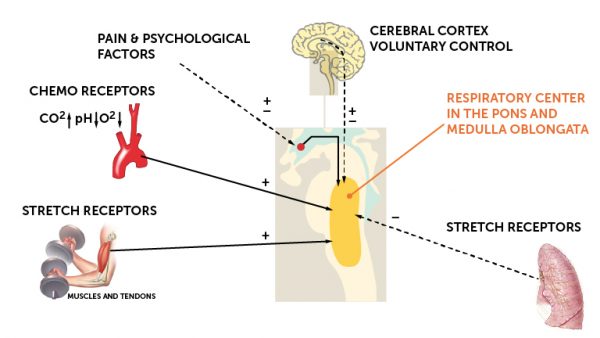The chemical factors that govern respiration rate and depth are O2, CO2, and H+ (pH) (Fig. 17). CO2 / pH is the strongest stimulus for respiration. In other words, it is not the amount of O2 in our blood that is most essential for the respiration regulation. The body is more concerned with the amount of CO2, rather than the amount of O2 in the blood. This can be explained by that fact that the blood is normally 100% saturation with O2. Thus, there is a large reserve of O2, so whether you breathe more or less O2 levels do not change very much particularly in normal, resting conditions. However, the body has a big challenge if CO2 builds up. We recall that CO2 and pH are closely related, and a high level of CO2 will result in a lower pH in the blood. This must be carefully controlled for so as not to disrupt the biochemical processes in the body by disrupting the acid-base balance. For these reasons, CO2 / pH are the strongest stimuli for controlling respiration.
Receptors in the aortic arch and the arteries leading blood to the brain detect changes in CO2 in the blood.
In addition to the chemicals, there are stretch receptors in the lung tissue, muscles and joints that stimulates respiration (Fig. 17). For example, during a jog, respiration will increase even before the need for additional O2 has been detected because the stretch receptors in the muscles and joints are activated immediately during increased activity and consequently stimulate respiration so that the body is prepared for this activity.’




